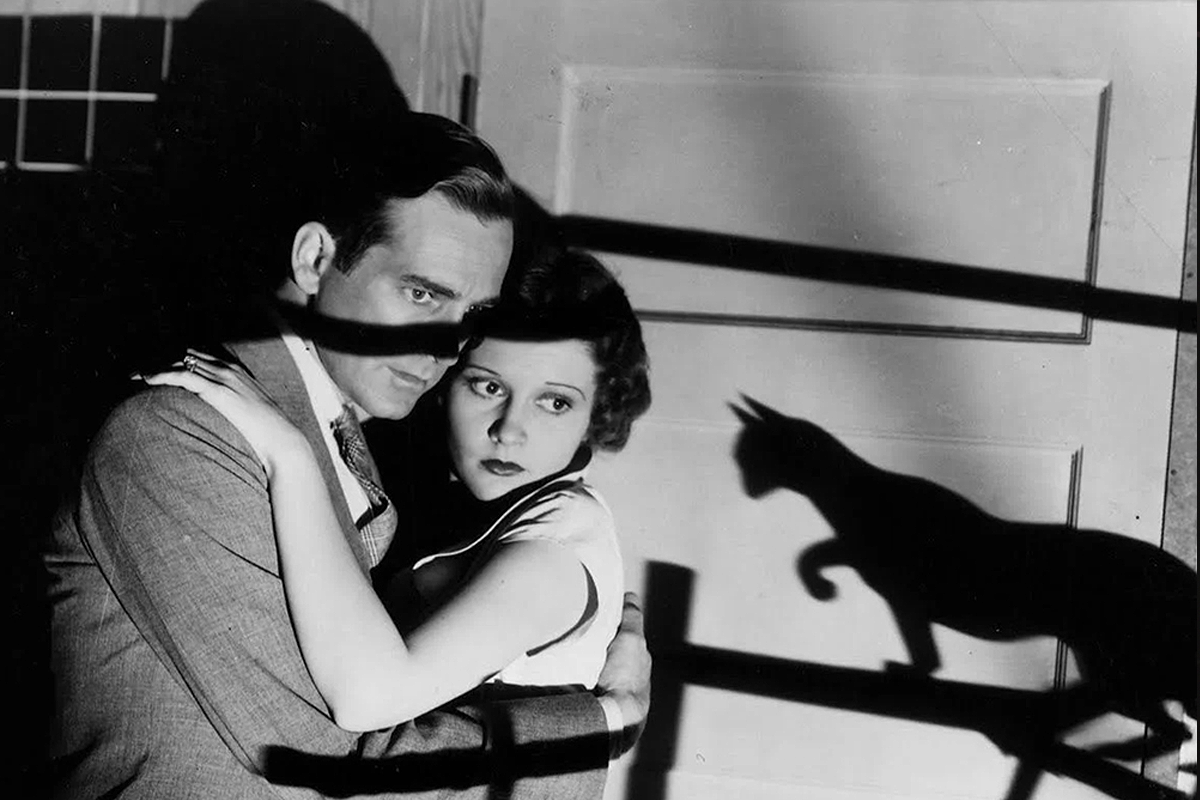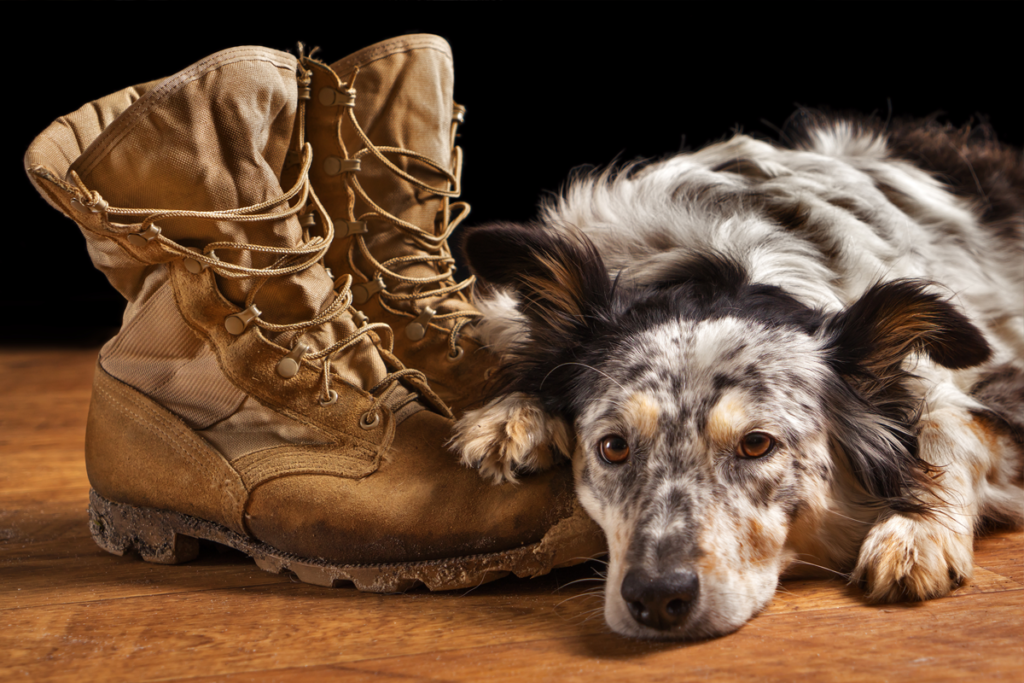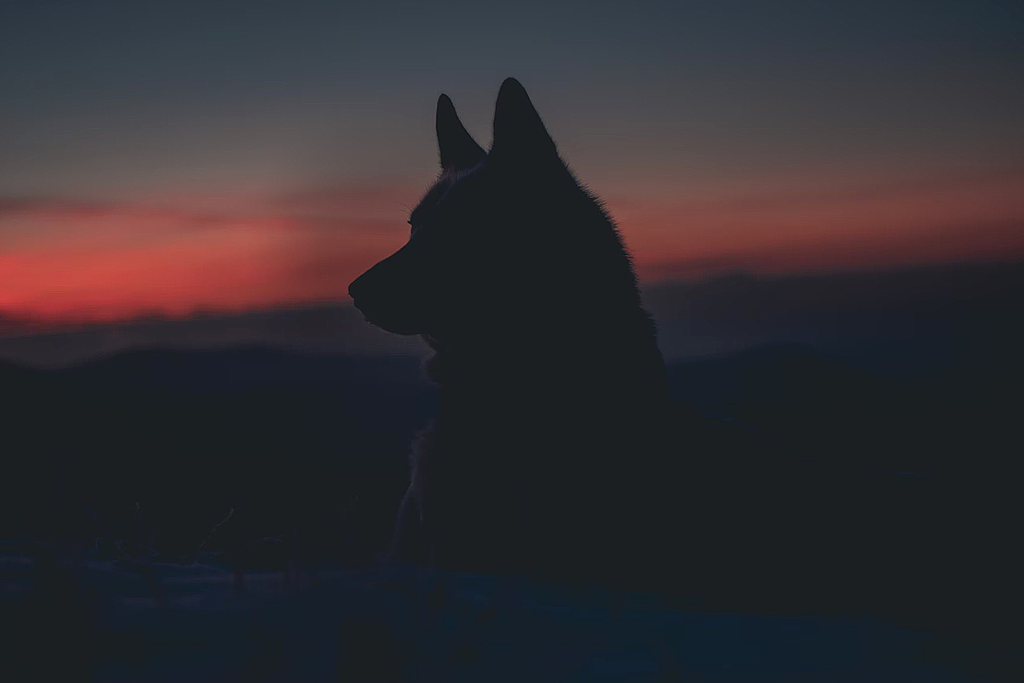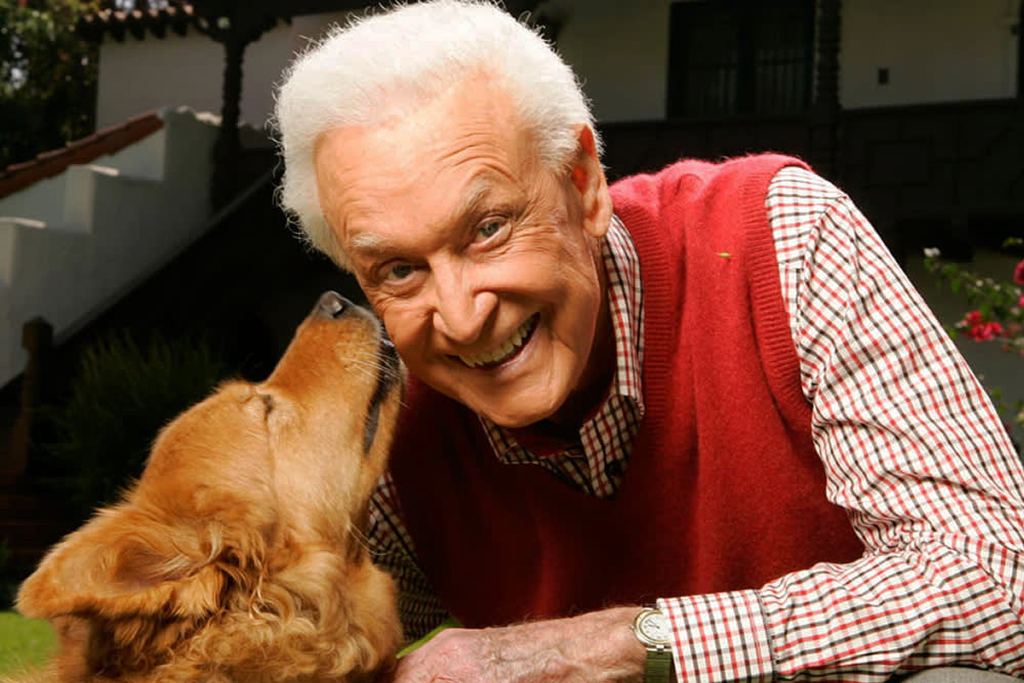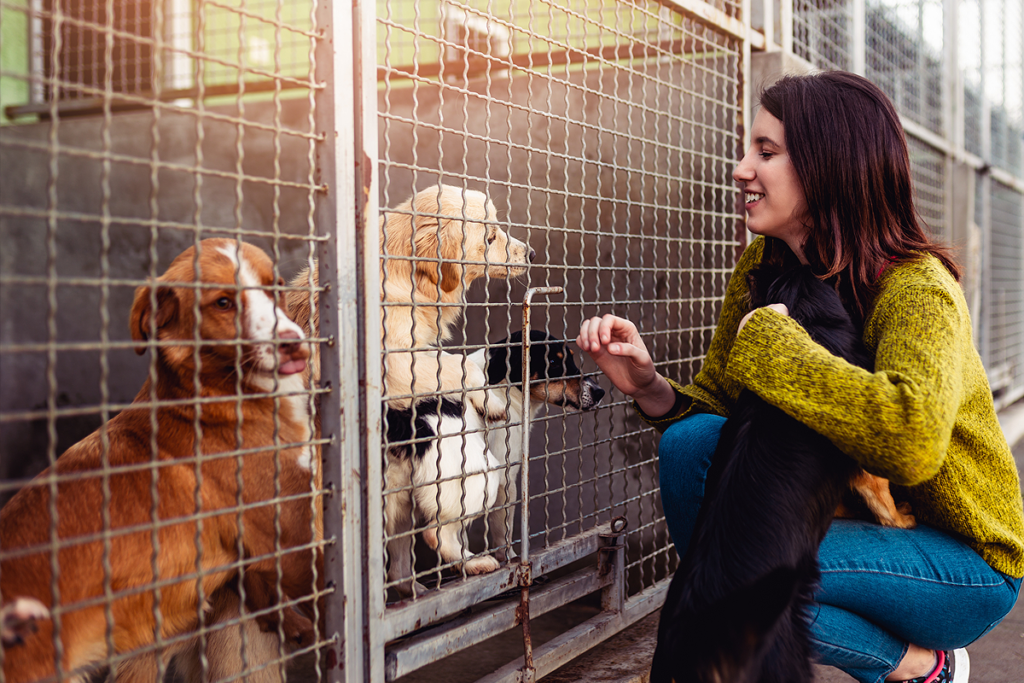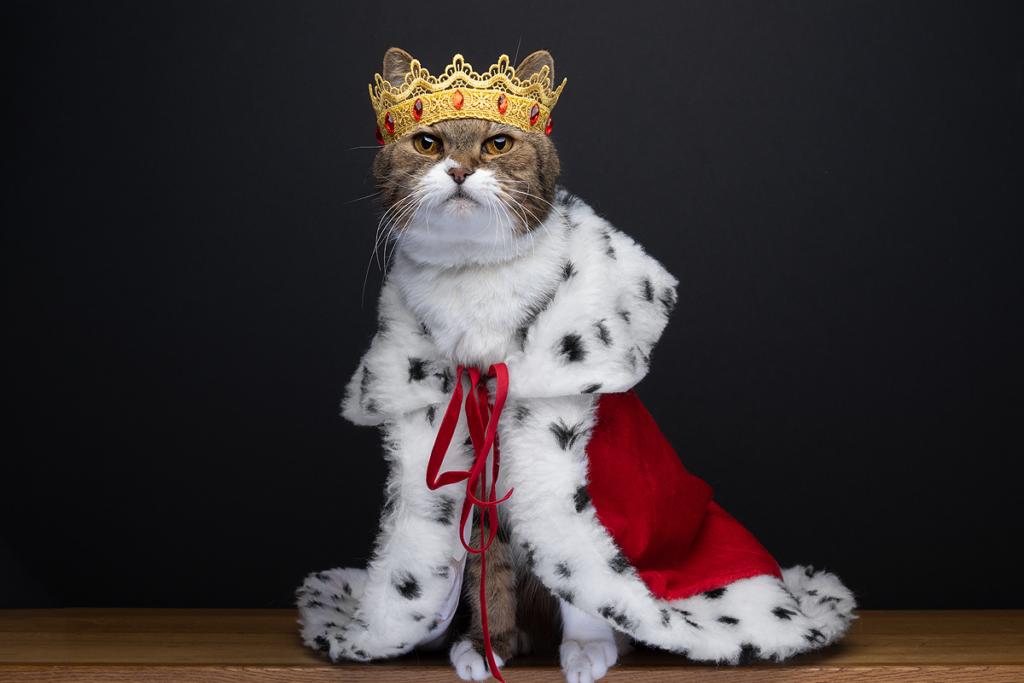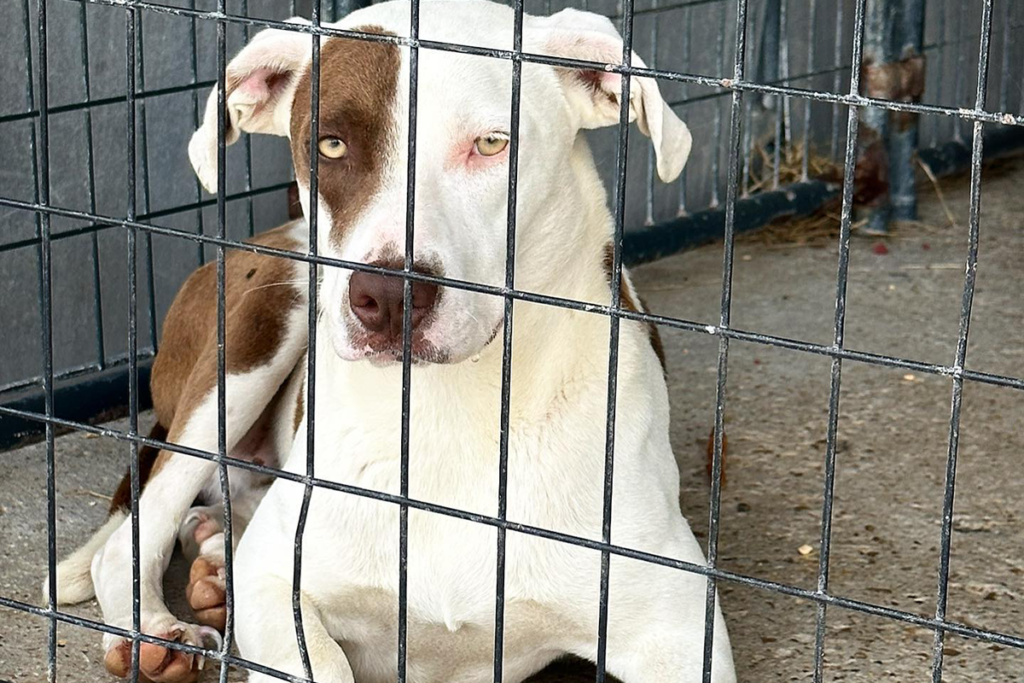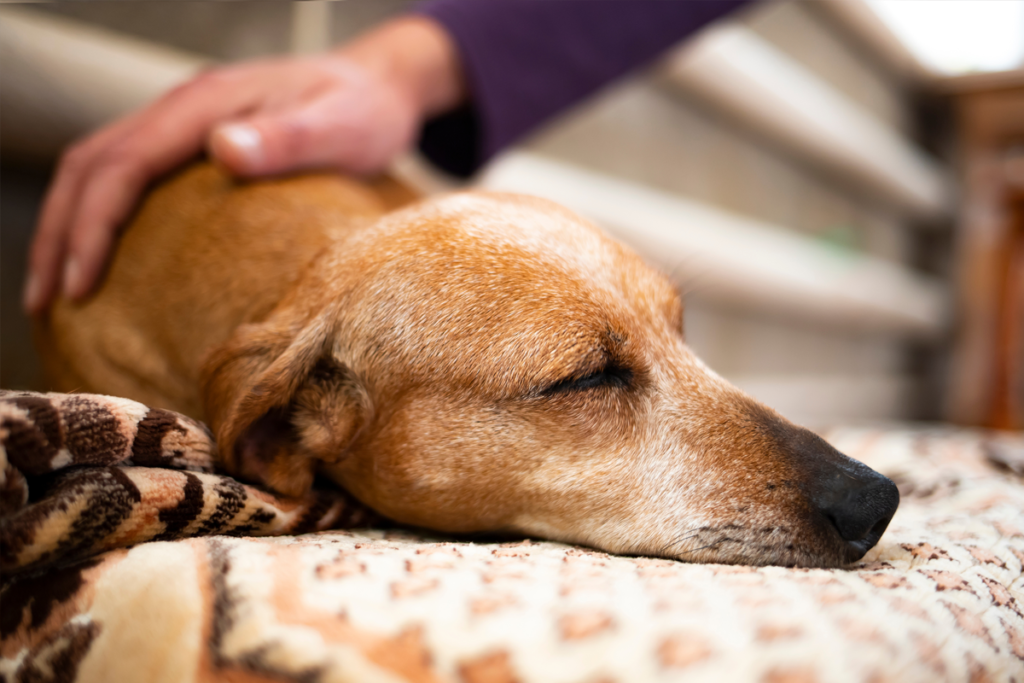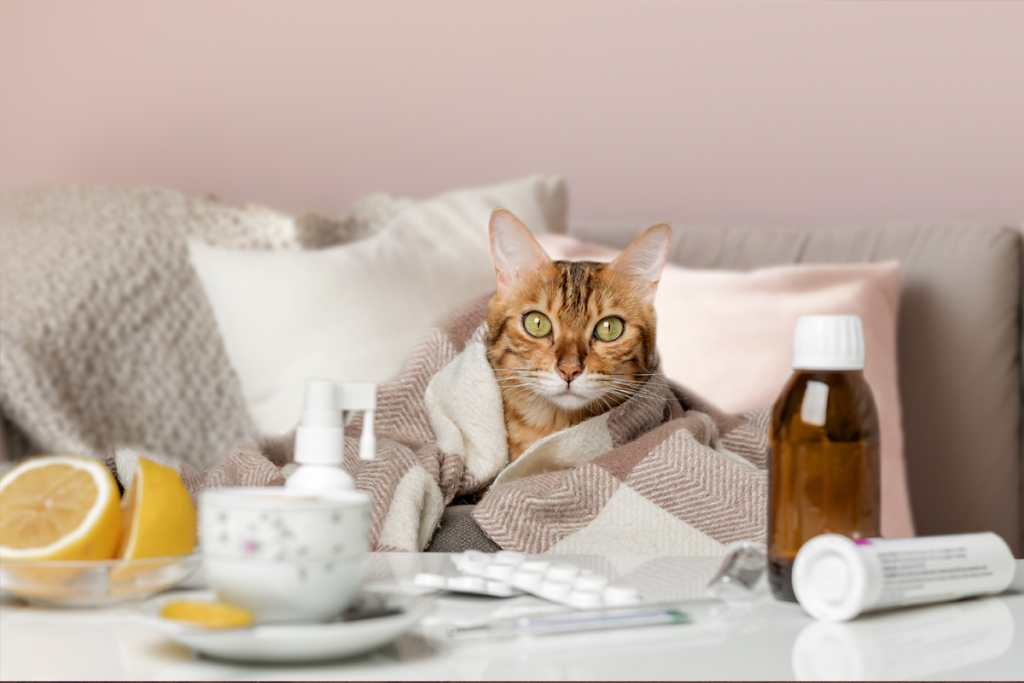“A philosopher is a blind man in a dark room looking for a black cat that isn’t there. A theologian is the man who finds it.”
– H.L. Mencken
For centuries, and across many cultures, black cats have represented the elusive unknown, gatekeepers of a knowledge just beyond our comprehension. With their mysterious reputations and mystical affiliations, black cats have long captured our imaginations – and our hearts. And the upcoming holiday of hauntings wouldn’t be complete without images of black cats decorating our doors and windows. Black cats are synonymous with Halloween, depicted as the beloved sidekicks of witches and earthly deities.
While many find this added mystique part of their undeniable charm, they’ve nonetheless earned a precarious classification as “bad luck” and even today, only 10% of black cats in shelters are adopted. So, here’s a little history to cut through the mystery, and hopefully shift the perspective of these ebony beauties from ominous to astounding.
Human and feline connections can be traced by to the world’s earliest civilizations, most notably ancient Egypt, where cats were considered divine symbols and revered protectors in Egyptian daily life. In fact, many mummified cats have been found in tombs alongside their humans. As depicted in many pieces of art, cats held a purposeful role in the home, chasing away poisonous snakes and scorpions.
Although cats were worshipped in Ancient Egypt, direct connection to Halloween began around 2,000 years ago, among the Celtic tribes based around Ireland. Druidic culture was pagan and often matrilineal, involving a pantheon of gods and animalistic spirits, witches, or “wise ones,” who acted as healers, tribal leaders, and sages. Many festivals and ceremonies took place at night, such as Samhain, or what we now call Halloween, giving a certain allure to those nocturnal animals who thrived in the dark, especially the black cat, with their notable success hunting in the shadows.
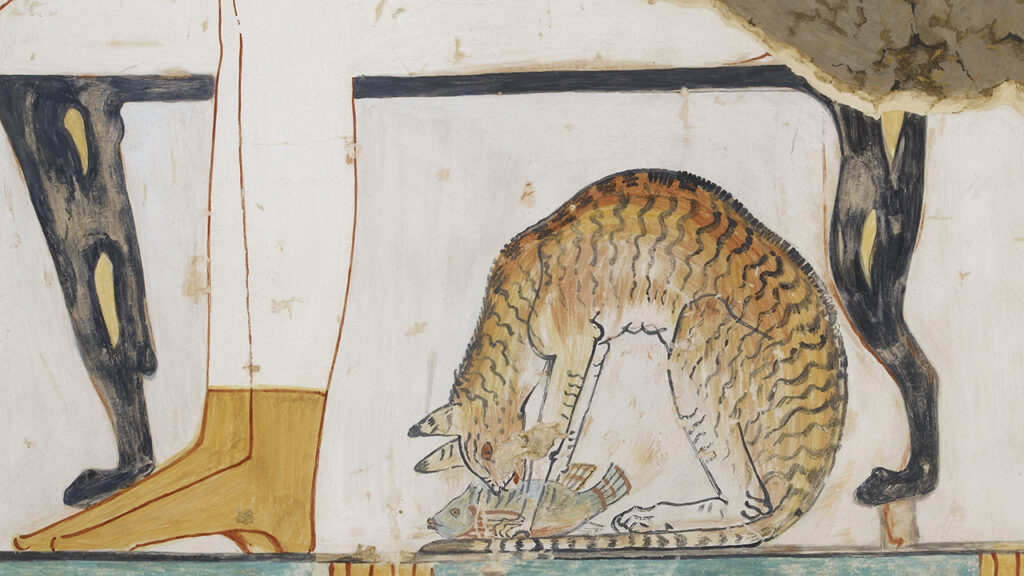
Though Samhain celebrated a variety of animal spirits, it had one very special feline “guest” known as Cait Sidhe. Cait Sidhe, (pronounced “kate shee”), is considered a magical, mischievous faerie of the highest order. He was said to be a large, black cat with a single white spot on his chest. On the night of Samhain, if you left a saucer of milk out for the fairy cat, your house would be blessed (much like leaving milk and cookies out for certain portly, chimney-shimmying old man!). But, if no milk was left for the mysterious black cat, your home would be cursed, and all your cow’s milk would dry up.
Official written records link black cats to the occult as far back as the 13th century when a church document called “Vox in Rama” was issued by Pope Gregory IX on June 13, 1233. “In it, black cats were declared an incarnation of Satan,” says Layla Morgan Wilde, author of Black Cats Tell: True Tales and Inspiring Images. “The decree marked the beginning of the inquisition and church-sanctioned heretic and/or witch hunts. Initially it was designed to squash the growing cult of Luciferians in Germany, but quickly spread across Europe.”
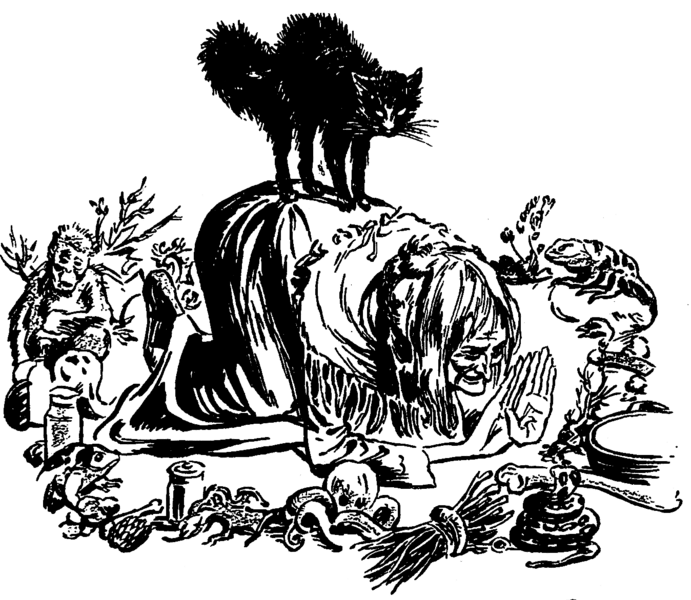
THE ORIGINAL CAT LADIES
In addition to the early association with the devil, cats also became inextricably linked to witches in medieval Europe. Although the early Christian church in Europe coexisted with witches, as the church gained power, she says that they saw witches as their direct competition in gaining the hearts and minds of the people.
“Witches honored the natural world, having deep respect for plants and animals. Affection between human and animal therefore began to be seen as ‘diabolical’, or devilish, and the old lady with her cats became seen as suspect.”
– Cerridwen Fallingstar
But it wasn’t only the connection they fabricated between witches, cats, and the devil that the early Christians feared: they also saw them both as threats. “Cats, like the women accused of witchcraft, tend to exhibit a healthy disrespect of authority,” Fallingstar notes. “They don’t fawn, like dogs, upon even the unworthy. In the church, neither independent women, nor independent animals, were to be tolerated.” At some point, the pairing of witches with cats was narrowed exclusively to black ones. Though there isn’t a definitive reason why, Fallingstar has some ideas. “The relationship between witches and black cats, in particular, is probably imaginary, but it is possible that black cats make better mousers, since they cannot be seen at night and therefore have a hunting advantage.”
Eventually, the fear surrounding black cats and their association with witchcraft made its way across the Atlantic to America, courtesy of the Puritan colonists who settled in Salem, Massachuesetts, says Daniel Compora, associate professor of English and literature at the University of Toledo. “The idea that witches could turn into their familiar likely evolved from those accused of witchcraft having cats as pets,” he explains.
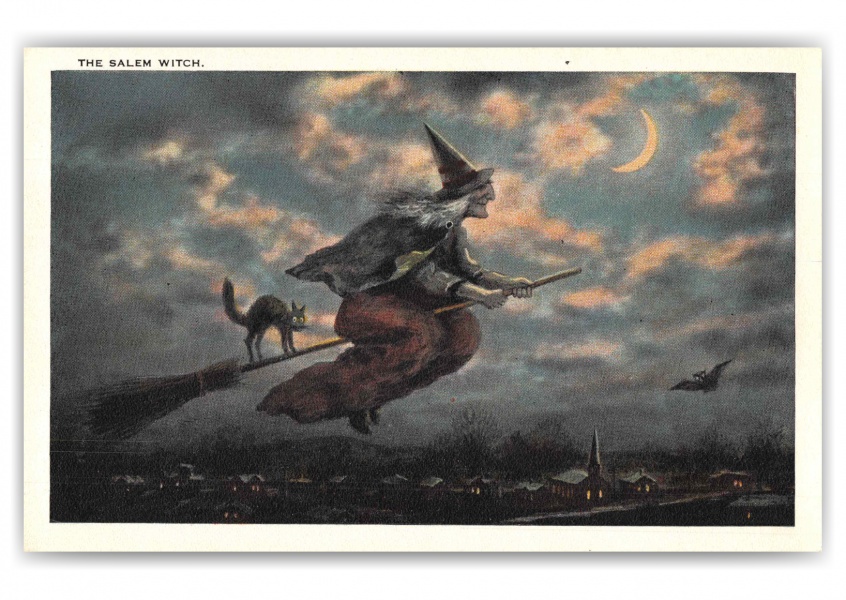
Black cats would continue to hold their dark majesty in folktales and spooky stories during autumn holidays. But the arrival of Irish immigrants in the 19th century brought a resurgence of the Celtic traditions, including “souling” — in which the townspeople would knock on the doors of the wealthy and take money to pray for their deceased family members — which would later become the tradition we know as trick-or-treating.
Unbound from puritanical constriction, more post-pagan traditions could abound, and by the turn of the century, Halloween had been secularized into community wide celebrations. By the ’60s, the old traditions had become publicly accessible, so the revenant spirits, scary witches, and devil-delivered black cats were renewed and popularized.
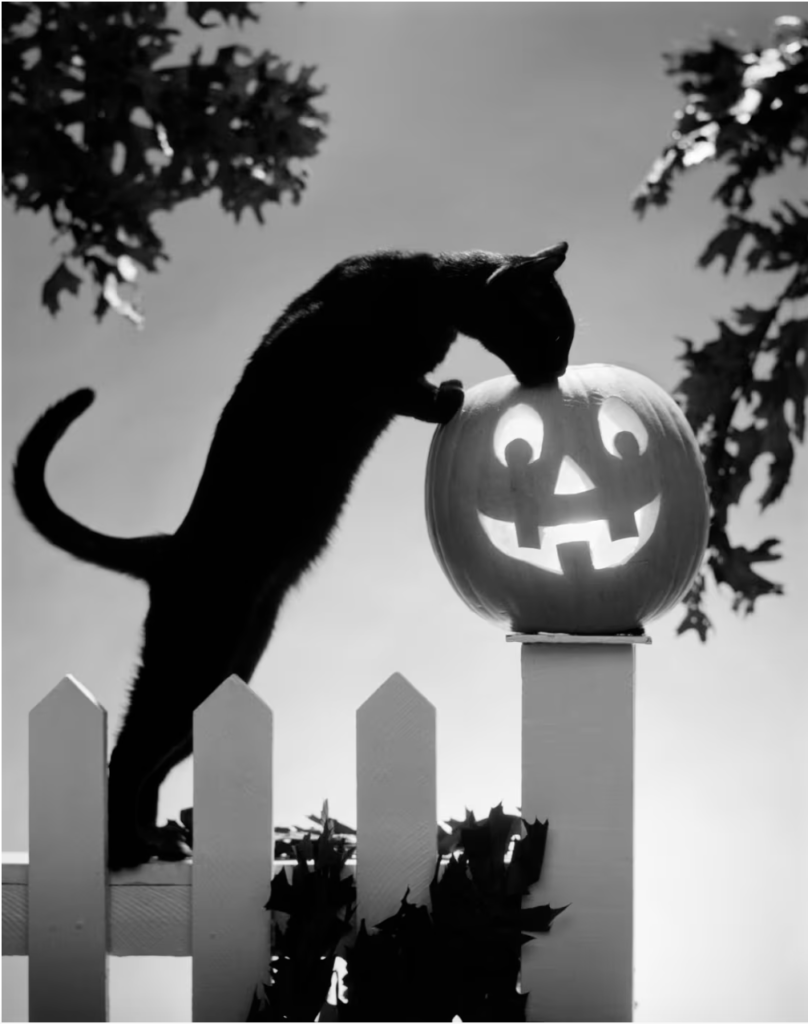
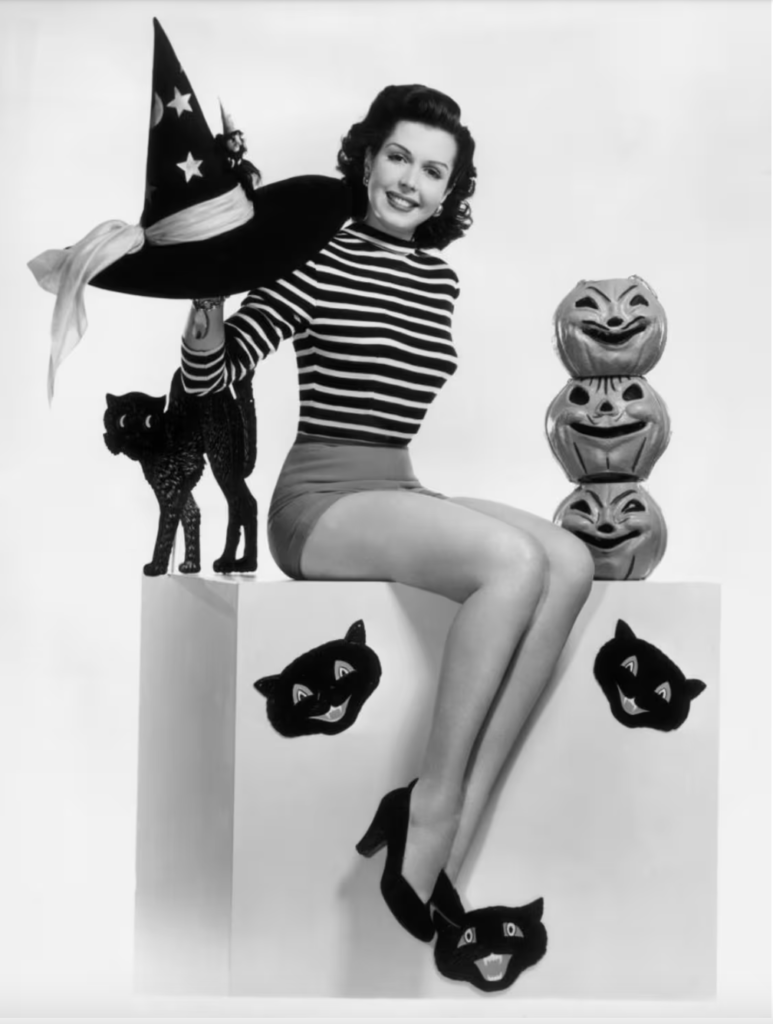
THE BLACK MARKET
Beyond the commercialization of the Halloween industry, black cats have become symbols at union halls and even spacecraft. At the turn of the 20th century, labor organizers used the image of a screeching black cat, known as “sabo-tabby,” as a symbol for strikes. In the 80s, NASA’s 11th space shuttle mission was to be titled STS-13. Fearing the number’s bad luck, especially after the difficulties faced by the Apollo 13 in the decade prior, NASA changed the mission’s sequence number. However, the crew, facing off with superstition, created patches for their astronaut suits featuring a black cat and the number 13. Eventually, they successfully landed the craft on Friday the 13th.
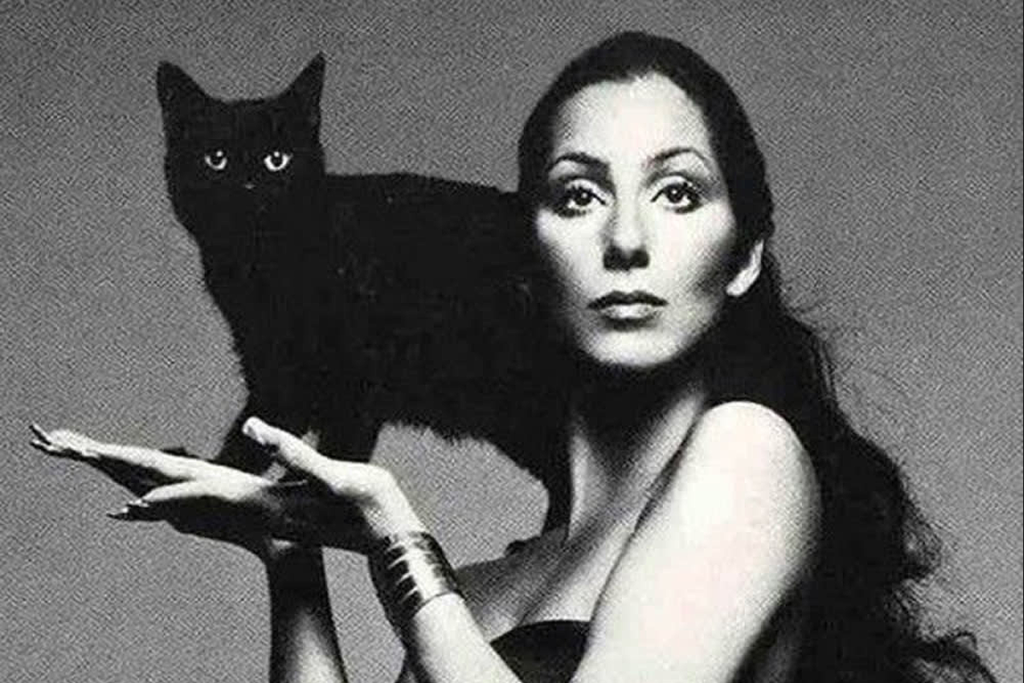
Over the past decades, black cats have become kitsch and campy symbols during Halloween. And while their presence is typically lighthearted, many of the old superstitions have impacted black cats in a significant and heartbreaking way. According to the National Library of Medicine, of all cats in shelters, black cats have the highest rate of euthanasia at a rate of 74.6%, and the lowest rate of adoption at 10% of any cat. Even as kittens, those with a black coat are the last and least likely to be adopted compared to all other kittens, which is extra alarming since research shows that kittens are adopted at a rate of 82% compared to adult cats who are 1.5 years or older being adopted at a rate of only 60%. This puts black cats not only at a higher risk of living out their entire lives in shelters, but of also being euthanized.
BACK IN BLACK
These tiny panthers are poised for a comeback though! In 2011, August 17th was officially named Black Cat Appreciation Day. And it’s much deserved, as black cats have some truly amazing traits that others don’t possess. Given the inky color of their fur, black cats have a high concentration of melanin in their hair. But if a black cat has an underlying tabby gene, faint stripes may appear on a cat’s fur after they’ve been lying in a sunny spot. The sun breaks down the pigment in their fur and reveals their dormant tabby coloring.
The same genetic mutation that causes a cat’s fur to be black also protects them from certain diseases. In fact, the mutations affect the same genes that offer HIV resistance to some humans. Since cats can experience many of the same health issues as we do—cancer, HIV, and cognitive dysfunction similar to Alzheimer’s, to name a few—they make perfect models for studying human disease. By figuring out how cats have evolved to resist diseases, researchers can, potentially, learn how to prevent disease in humans as well.
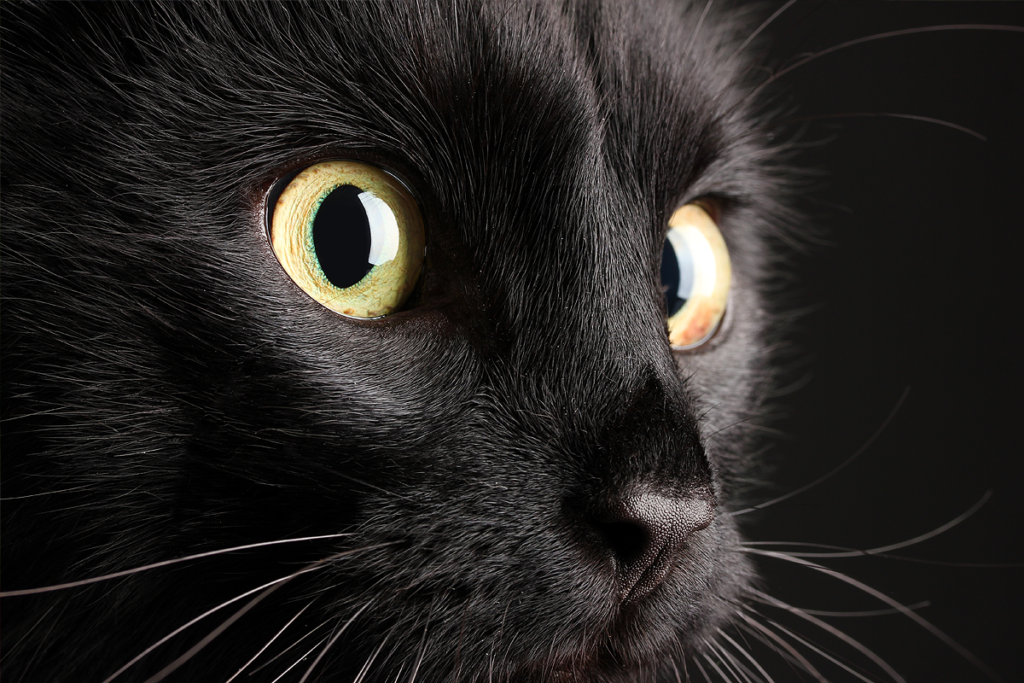
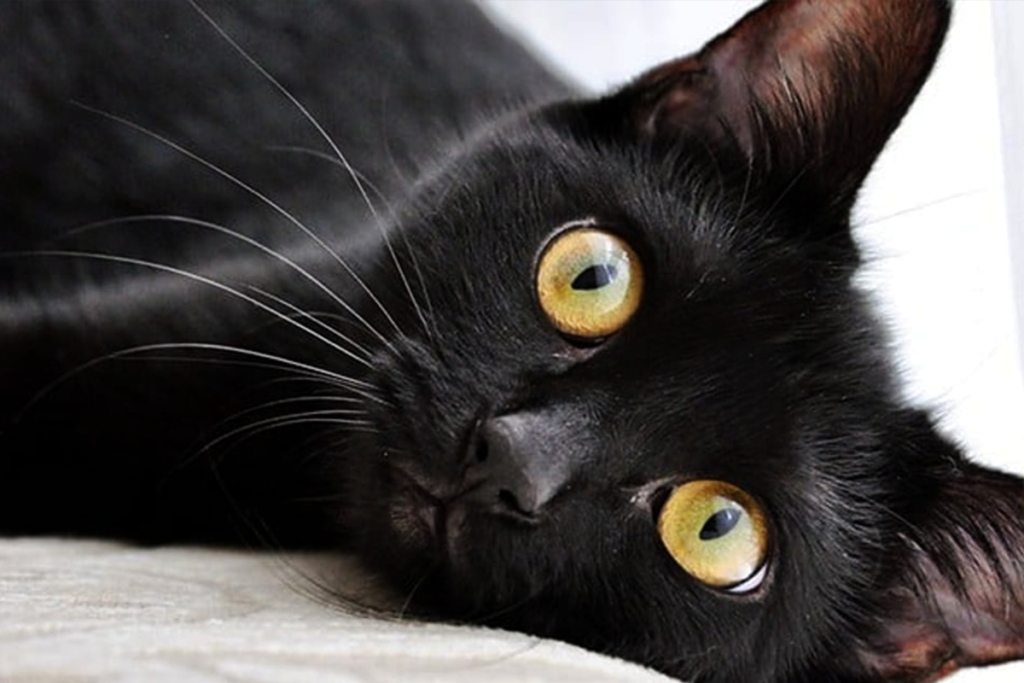
These inky, ingenious creatures have an incredible history. Certainly one of perseverance and determination, continuing to thrive in a world that has dealt them an unkind hand for centuries. All tricks, no treats.
Now, if you see a black cat cross your path, consider it a sign of good luck. If they can persist, so can we.
HAPPY HALLOWEEN

